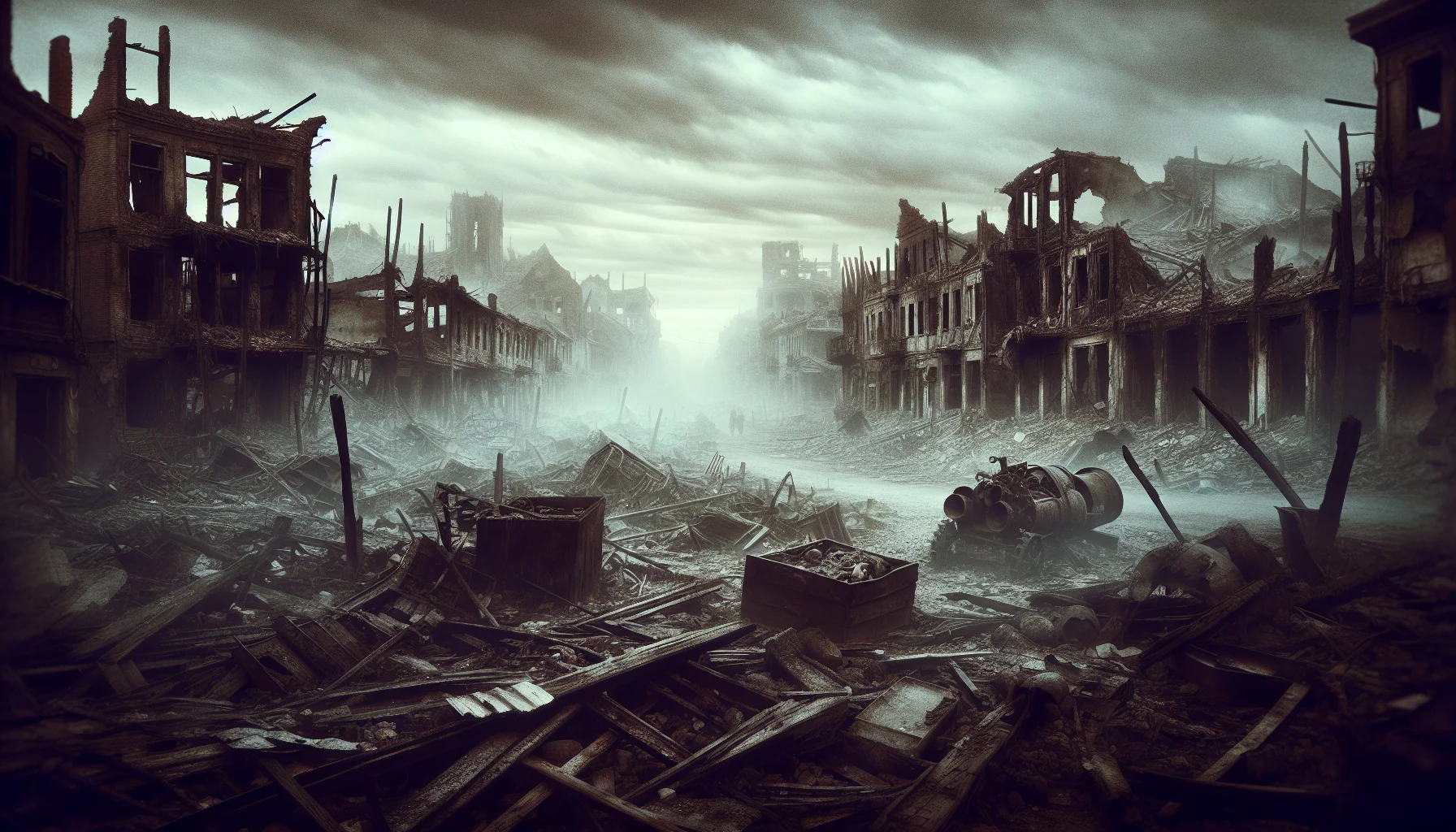
2015 Baga Massacre
by: The Calamity Calendar Team
January 3, 2015
The Shadows of Insurgency Loom Large
In the early days of January 2015, the northeastern region of Nigeria, a landscape marked by endless horizons and quiet resilience, faced the echoes of horror. The town of Baga, nestled in Borno State, became ground zero for one of the most devastating assaults in the history of Boko Haram’s insurgency. This brutal campaign was not an isolated horror—it was part of a years-long reign of terror that had already seen vast swathes of communities brought to their knees under the violent ambitions of an extremist vision.
A Gathering Storm
Boko Haram, an extremist militant group, had long haunted the dreams of many Nigerians. Since its inception in 2009, its insidious presence—its name translating roughly to 'Western education is forbidden'—sought to reshape Nigeria under a radical interpretation of Islamic rule. Operating from the shadows, they unleashed countless atrocities on unsuspecting civilians, rapidly growing their control over the northeastern territories. Before 2015, remote parts of Borno State fell one by one, unable to withstand the relentless advance of Boko Haram's forces.
Against this backdrop of foreboding, the town of Baga seemed an inevitable target. Home to the Multinational Joint Task Force (MNJTF) comprising troops from Nigeria and its neighbors, Baga was seen as a critical nerve center in the fight against Boko Haram. As 2015 dawned, tensions simmered beneath the surface, like a storm waiting to break.
The Assault Unfolds
On January 3, 2015, the storm hit. The sky over Baga was engulfed not by clouds, but by smoke and fire. Boko Haram insurgents launched their well-coordinated assault, armed with an arsenal of deadly weapons and explosives. The attack came with brutal precision, unleashing chaos and fear. The Nigerian troops stationed at Baga, though brave, were overwhelmingly outnumbered and quickly overpowered, leading to a hasty retreat.
As echoes of retreating gunfire faded, Boko Haram took command of Baga, their defiance of the Nigerian state palpable. But the horror was far from over. The days that followed saw neighboring villages fall into the militant group’s relentless grip. From January 4 through January 7, the terror spread like wildfire. Doron Baga, Kauyen Kuros, and other surrounding areas succumbed to the onslaught. Homes, once filled with laughter and life, were reduced to ash and ruin. Innocent civilians, including the most vulnerable—women and children—were indiscriminately targeted.
A Community Devastated
By January 7, 2015, the full horror of the massacre unfolded. Baga and its surrounding settlements were lost. Thousands fled their homes, with many making desperate treks across the precarious border to Chad, in search of safety and salvation. The desolate roads bore witness to anguished cries, footsteps heavy with grief and fear, and a population displaced, thrust into the unknown.
Thanks for subscribing!
Exact figures on the death toll remain hauntingly elusive. Reports oscillate between 150 and 2,000 fatalities, with chaos and restricted access painting an incomplete picture of the full extent. What remains undisputed is the staggering displacement of approximately 35,000 people. The destruction scored deep wounds into the very soul of these communities, as up to 70% of Baga lay in ruins. Once-thriving marketplaces and homes now stood silent, echoes of a vibrant past lost to smoke and ash.
A World Reacts and Responds
The international response was swift in its condemnation. Global outrage reverberated, highlighting the growing peril posed by Boko Haram. The massacre became a catalyst for renewed efforts to curb the insurgency's influence. Out of the ashes, the determination of the Nigerian government and its regional partners rekindled. The Multinational Joint Task Force received a new mandate: to combat Boko Haram’s terror with reinforced vigor.
However, the massacre also uncovered significant challenges. Criticism mounted over the Nigerian military's inability to protect Baga’s civilians. Both internal and external voices demanded improved strategies and resources for military operations, alongside enhanced humanitarian efforts for those displaced by the violence.
The Path to Recovery
The echoes of Baga’s massacre reached beyond immediate responses, marking a turning point in counter-insurgency efforts. Since 2015, steady progress has been made in reclaiming territory once lost to Boko Haram, including Baga itself. The fight is far from over, though. The remnants of Boko Haram and its offshoots, like the Islamic State West Africa Province (ISWAP), continue to cast a long shadow across the region, evolving their tactics in the form of asymmetric warfare and suicide bombings.
Rebuilding and recovery efforts persist. Rehabilitation of infrastructure and aiding displaced families remain vital to restoring normalcy and hope. The steadfast engagement of regional forces and international allies underscores the enduring commitment to eradicate the extremism that once shattered Baga.
A Legacy of Resilience and Determination
The 2015 Baga Massacre stands as a tragic testament to the profound human cost of extremism. Yet, it also reflects a burgeoning resilience—a resolve by communities and the world at large to confront and overcome the threats posed by terror. The road to recovery is fraught with challenges, but it is paved with determination, collective strength, and hope for a future free from fear.
As Baga rebuilds, it bears the silent scars of the past but also the bold dreams of tomorrow—a tomorrow where peace and stability hold sway over shadows of violence.
Stay in the Loop!
Become a Calamity Insider and get exclusive Calamity Calendar updates delivered straight to your inbox.
Thanks! You're now subscribed.